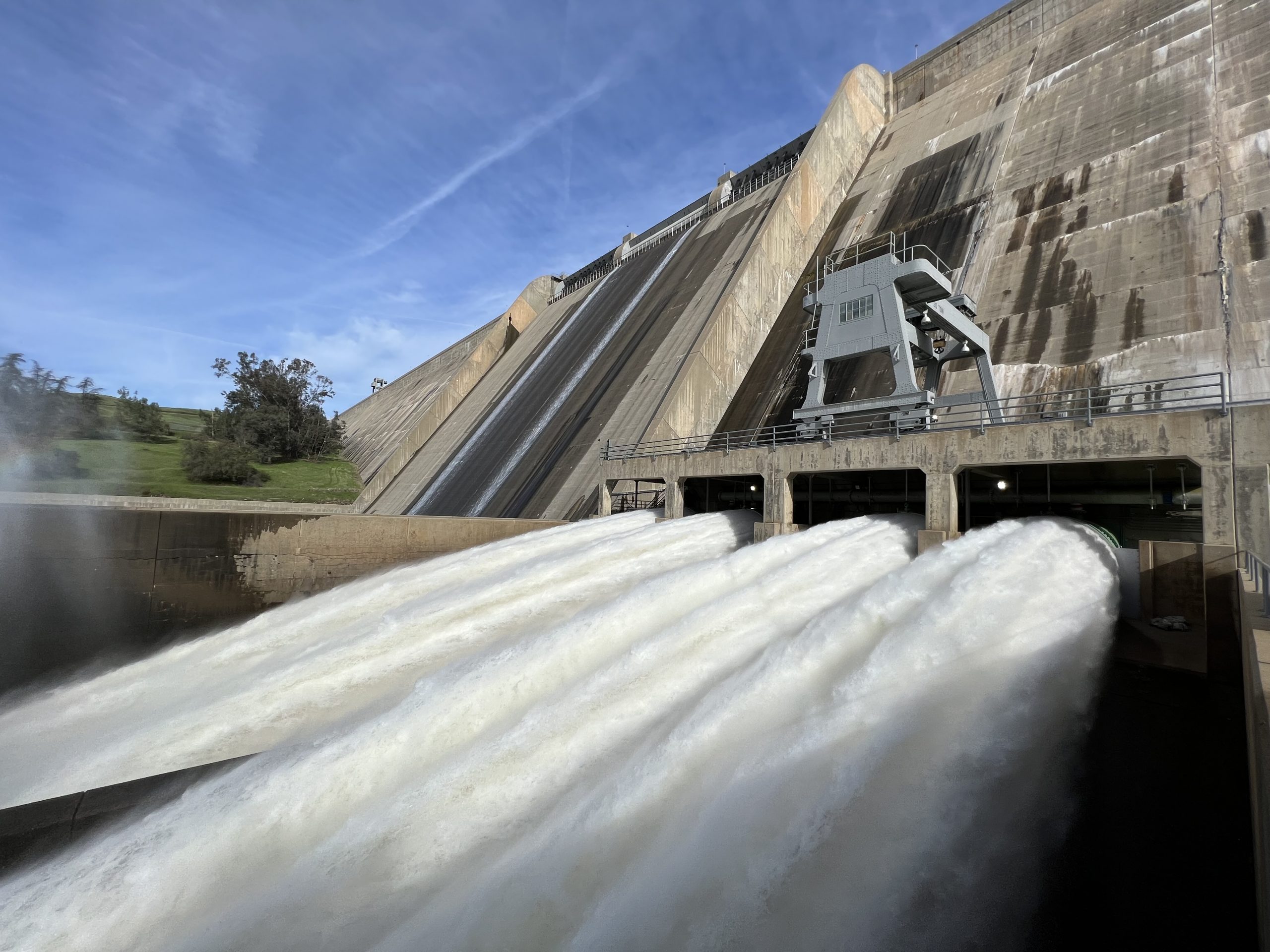
Central Valley spring-run Chinook salmon evolved to take advantage of the Sierra’s cold, snow-fed, mountain water. Making the journey from the Pacific Ocean upriver much earlier than their fall-run counterparts, spring-run Chinook adults return to their natal streams when flows are high and water temperatures are low. Then, instead of spawning and completing their lifecycle upon reaching their destination like fall-run Chinook, spring-run remain in the cold river waters and hold throughout the summer before finally spawning in the fall.
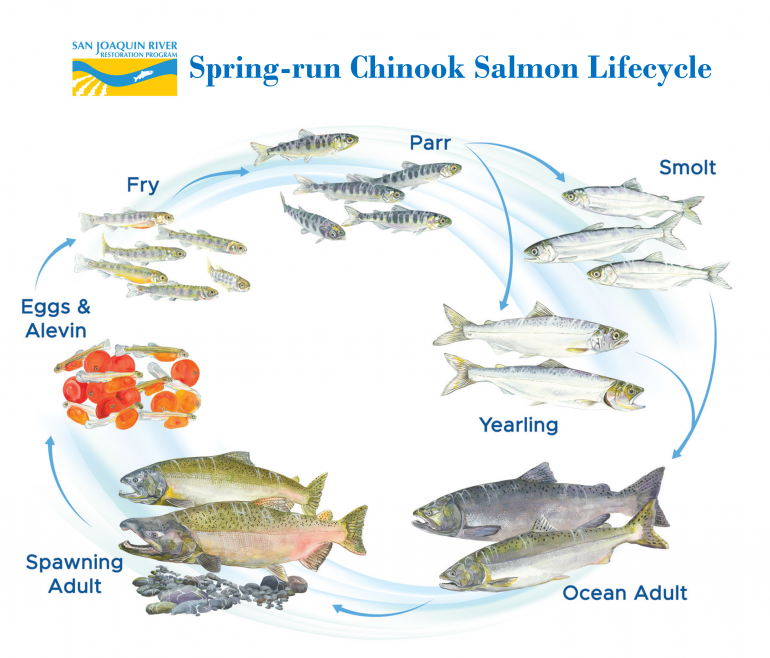
This year, a record 448 adult spring-run returned to the San Joaquin River — the highest number of returning spring-run since the San Joaquin River Restoration Program (Program) began reintroducing the fish in 2014. With spring-run no longer able to access the San Joaquin’s upper watershed where the waters are coldest and most abundant, the Program aims to provide suitable river conditions and habitat for the 24 miles below Friant Dam — the modern-day terminus for the San Joaquin’s spring-run journey.
Central Valley summers are arid and hot, so the Program continuously seeks strategies to maintain the cold water needed for the spring-run lifecycle. To provide beneficial river conditions, the Program takes into account two important variables.
First, there is the volume of water made available for Restoration Flows. These in-stream flows are based on the river’s historical hydrograph (flow data) and range in six levels from “Wet” (the most water) to “Critical Low” (the least which allocates zero water). This year, the Program has a “Normal-Dry” allocation resulting in 269,355 acre-feet to support salmon restoration and the Program’s Restoration Goal. Fishery experts constantly evaluate how best to release this water to benefit the spring-run lifecycle, and Reclamation operates dam releases to implement the best solution (click here to see the final Flow Recommendation for this season).
“You are relying on one of the smallest and oldest reservoirs in the Central Valley Project, which has high summertime demands, to meet in-stream water needs for spring-run,” said the Program’s Flow Coordinator, Chad Moore. Millerton Reservoir is 520,500 acre-feet — almost 9 times smaller than Shasta Reservoir (the Central Valley Project’s largest) — and consequently, doesn’t have the volume of deep, cold water that larger reservoirs may have, said Moore. And, therein lies the second water management consideration: providing dam releases that are cool enough to sustain spring-run throughout their lifecycle.
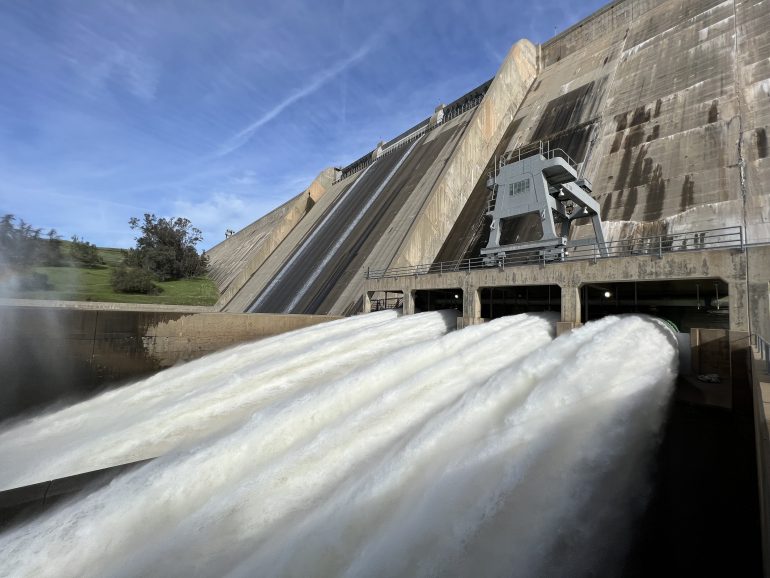
Cold water is denser than warm water and, typically, water warms the closer you get to the surface of a water body. For the Program’s purposes, the cold-pool is water that sits lower in the reservoir, closer to the bottom of the lake, and is cold enough to make river conditions viable for spring-run Chinook survival.
For the river to benefit spring-run, the Program has to work within the existing dam design. Friant Dam has multiple outlets including to Friant-Kern and Madera canals located at higher elevations in the reservoir and also lower outlets at river level. Water released at river level tends to be the coldest water in the reservoir. Since cold water is needed to keep conditions favorable for spring-run Chinook salmon holding, spawning, and for egg incubation, preserving Millerton’s cold-water pool for these sensitive life stages in autumn is essential.
“Reducing summer releases at the river level reduces depletion of the cold-water pool,” said Scott McBain, a hydrologist and member of the Program’s Technical Advisory Committee which works with the Program’s Restoration Administrator to develop the Program’s annual Restoration Flow schedule. The trade-off, he said, is that sections of the river may go dry.
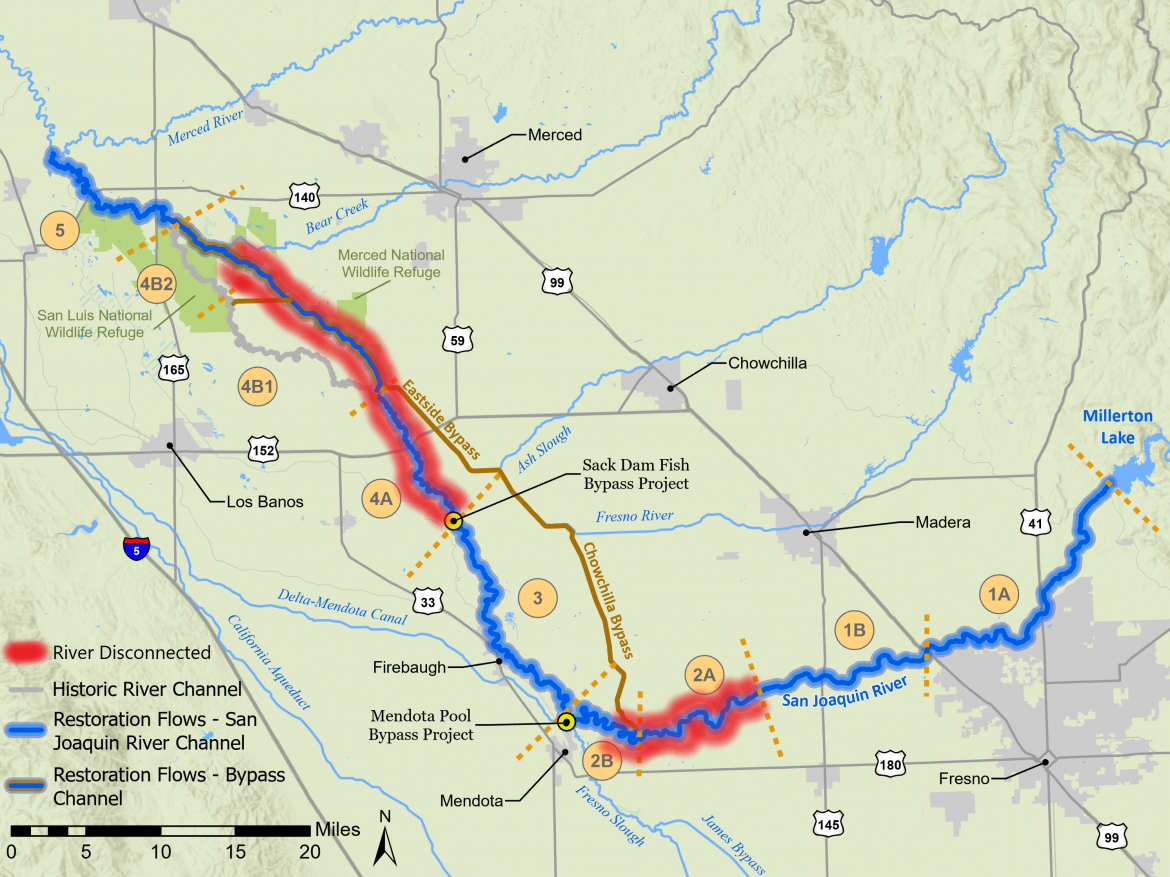
After construction of Friant Dam, sections of the San Joaquin River between Friant Dam and the confluence with the Merced River (the Restoration Area boundaries) would not receive flows due to upstream water diversions. However, with Restoration Flows now allocated to benefit spring-run Chinook, the river can run continuously in most years. There have been periods since Program inception when the river has been dry in the summertime along parts of that 150-mile stretch, most recently in 2021 and 2022 which were drought years, said McBain.
While having a fully connected river is a benefit of the Program, the Program must also balance the survival of spring-run Chinook salmon. Preserving cold water in Millerton Reservoir gives salmon the best chance to generate a naturally-reproduced salmon population, but will also temporarily disconnect the river this year. The reduced dam releases will result in two dry stretches of the San Joaquin River during July and into September — between Gravelly Ford and Mendota Pool (Reach 2A), and downstream of Sack Dam (Reach 4 and the Eastside Bypass).
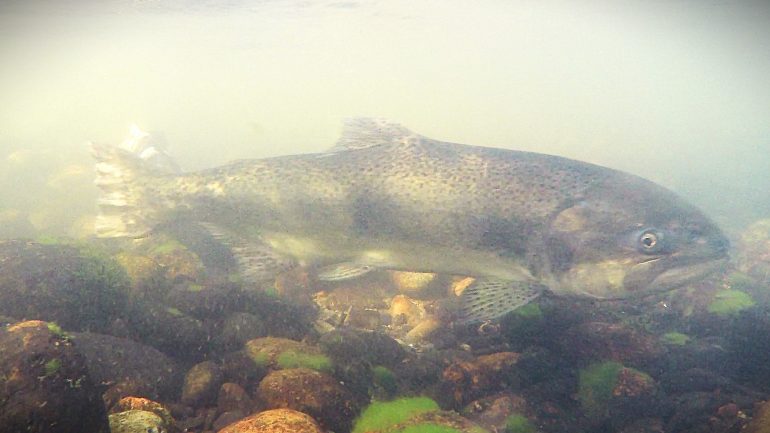
Starting in September, flows are scheduled to increase again as the spring-run egg incubation period requires more cold water, and the river will begin the process of reconnecting. The Program continues to look for ways to optimize management of the cold-water pool, keep the river connected, and meet the Program’s Restoration Goal.
For more information about this article or other aspects of the SJRRP, please contact Josh Newcom, Program Public Affairs at 916-978-5508 or via email at snewcom@usbr.gov/

